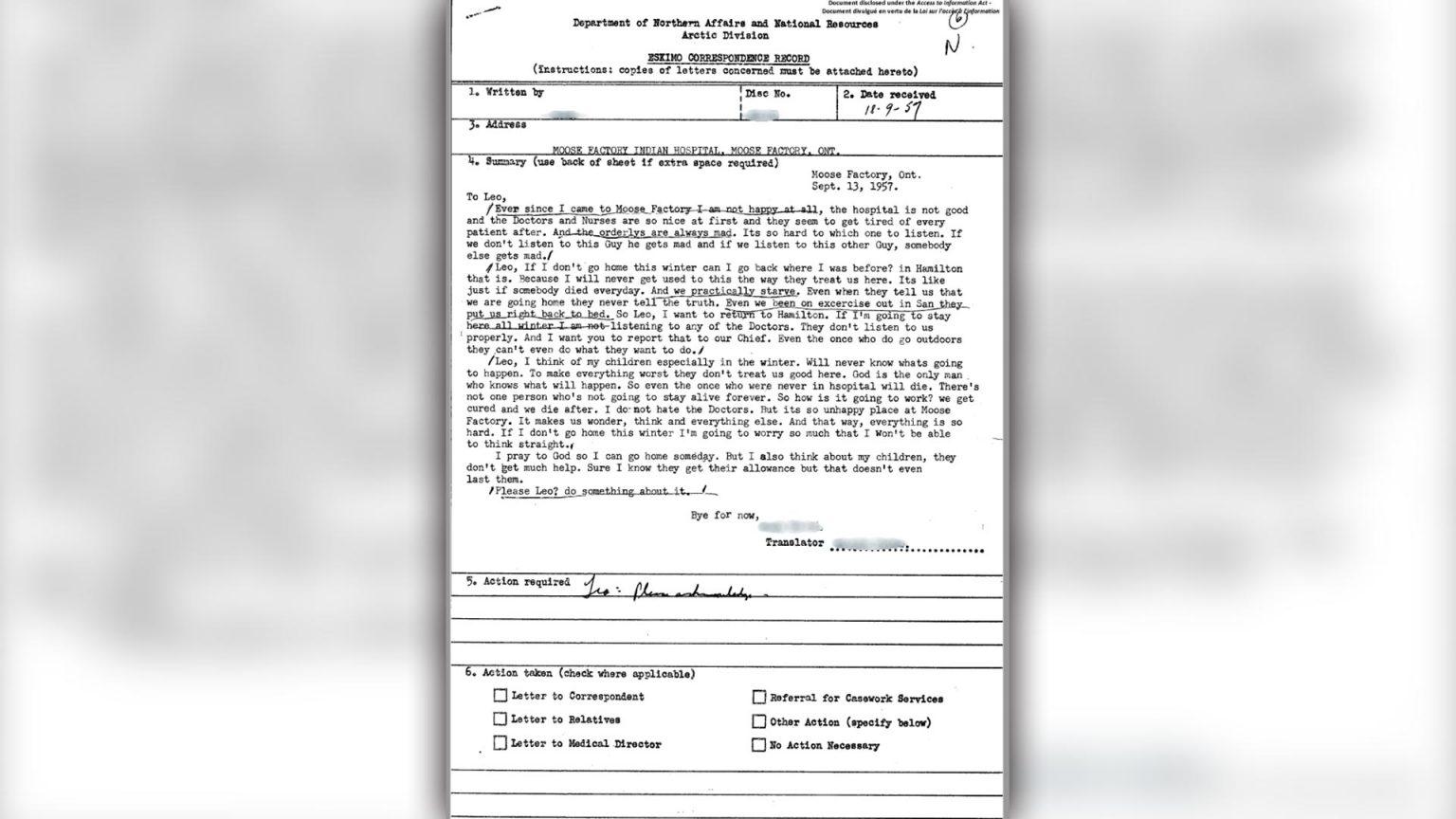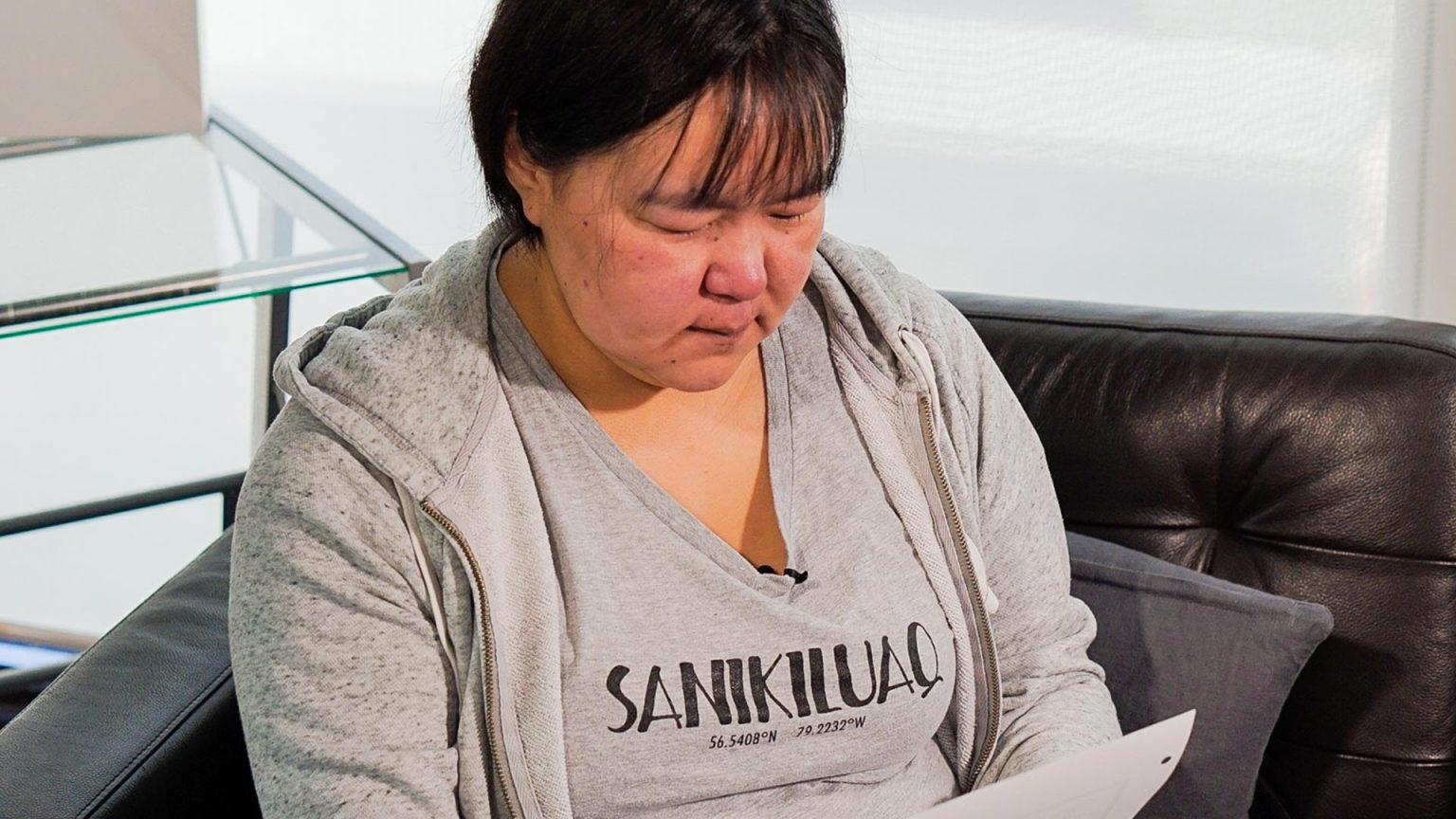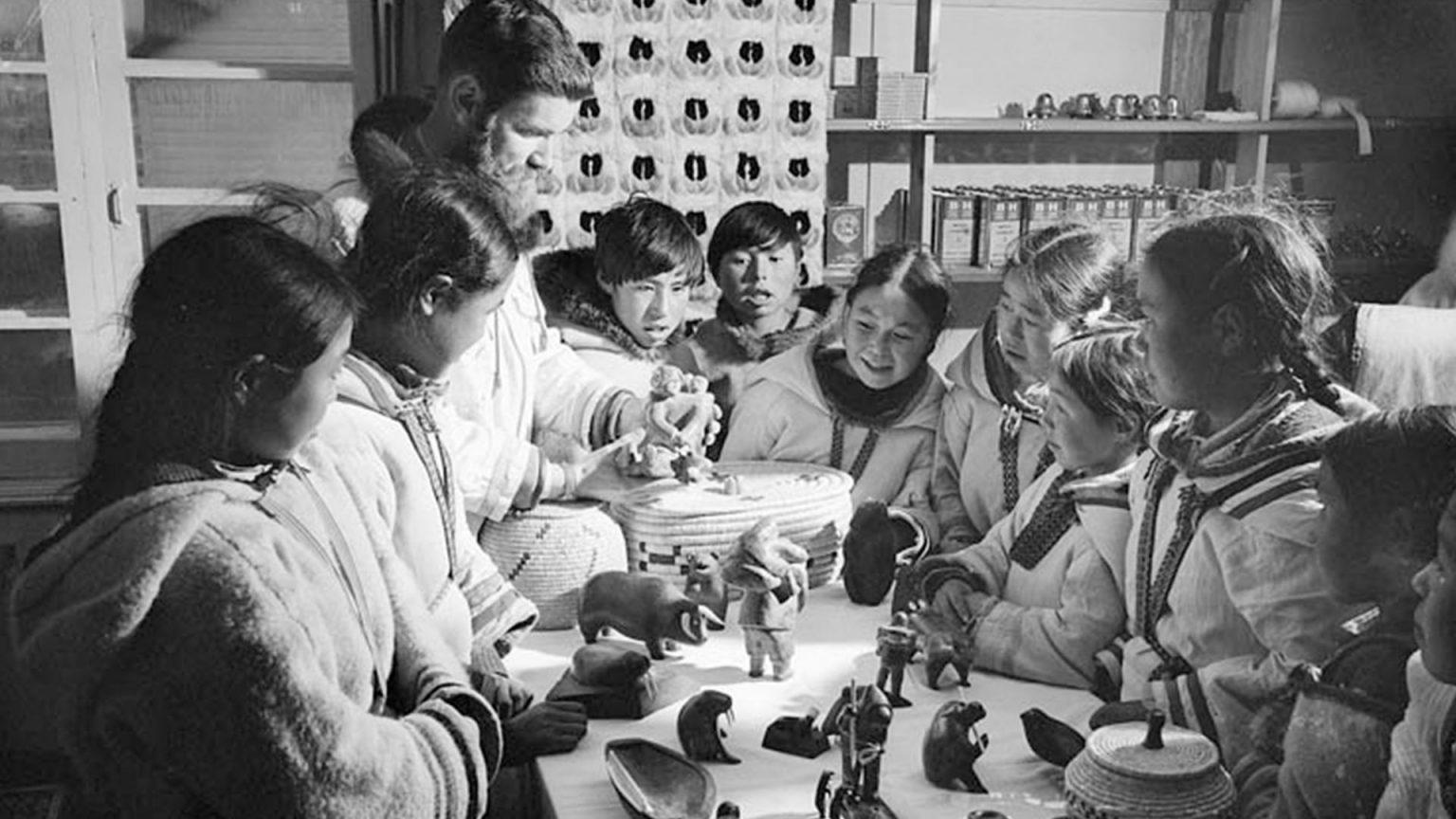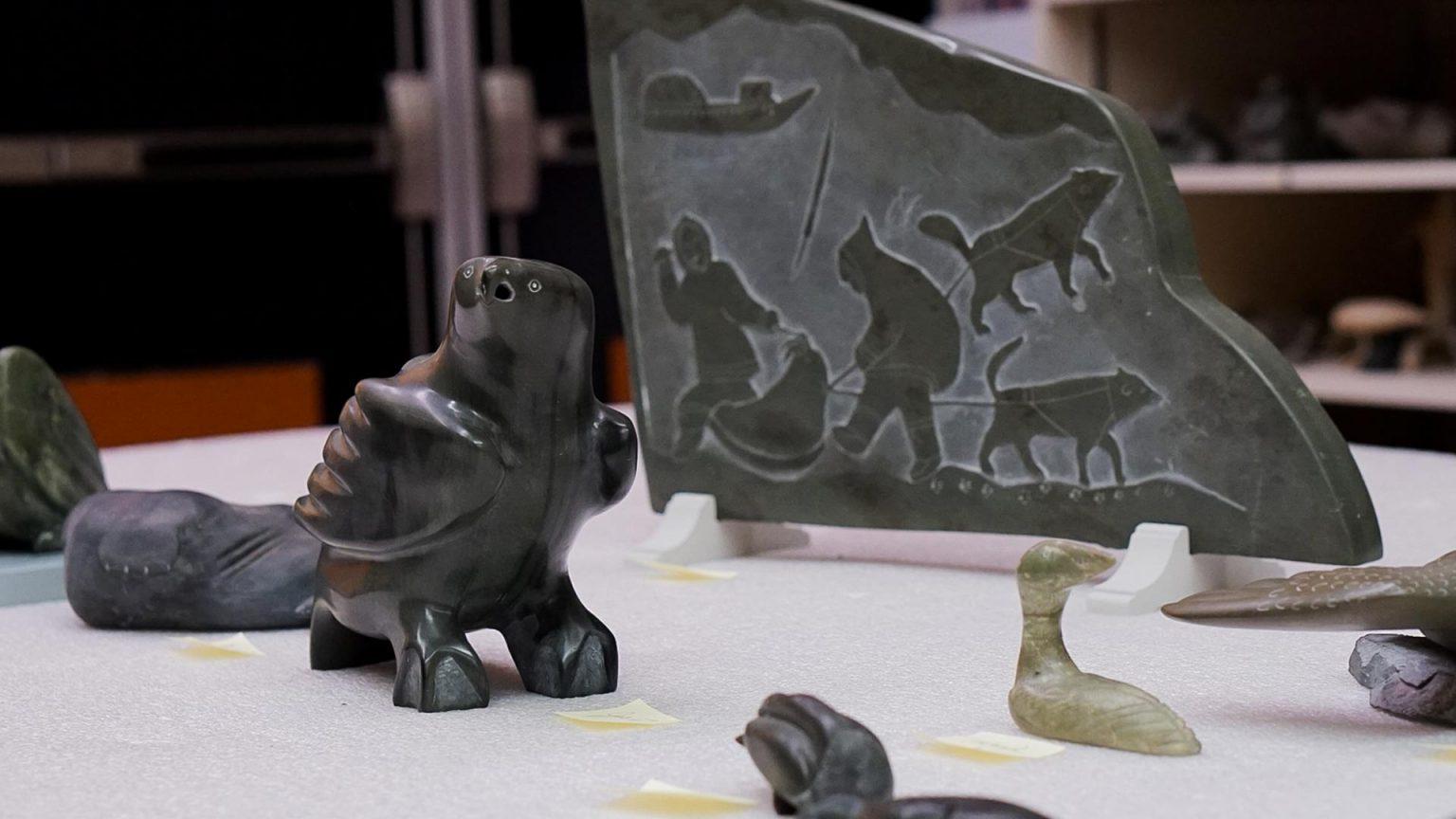Inuit patients taken home ‘like a pet’ by southern staff part of TB outbreak legacy of 1950s by Brittany Guyot
APTN News | May 22, 2020
Categories: news
Inuit patients taken home ‘like a pet’ by southern staff part of TB outbreak legacy of 1950s
Brittany Guyot / APTN News / May 22, 2020
Inuit who were sent south for treatment for tuberculosis (TB) in the 1950s and ‘60s complained about their treatment, threatened self harm and were taken home as pets by staff according to a probe into the outbreak by APTN Investigates.
Some of the information was gleaned from nearly 6,000 documents obtained under the Access to Information Act that reveal the misery hundreds of Inuit faced during their time in sanatoriums across the country while other information came from transcripts from past commissioners of inquiry.
Within the documents are letters from more than 800 Inuit TB patients reveal how some felt about the treatment they were receiving and about being short changed after being forced to making carvings while they were recovering.
The letters were written by tuberculosis patients in Inuktitut syllabics and then translated to English for the Northern Service Officer (NSO) of the Department of Northern Affairs and National Resources.
“Am fed up with hospital,” one Inuit patient wrote. “It’s the worst hospital & nurses do not treat Inuit patients properly at all.”
“If I’m well by winter & don’t go home I might do harm to myself,” the note said. “Wait for further news.”
The NSO would review the letter and with the help of a translator they would respond back to the patient, addressing any questions or concerns the patient had.
Most of the letters are contained within a letterhead titled, “Eskimo Correspondence Record”.
The letters show patients experienced a tremendous desire to return home, many wanted to know how their loved ones were doing in other hospitals, and others detailed the horrific conditions in which they were made to live in.
The treatment of Inuit by the people purported to be there to help them was on full display at Qikiqtani Truth Commission where Walter Rudnicki, former head of the Northern Affairs and National Resources’ Arctic Division testified about his investigations into missing Inuit children.
“I found quite a few of these so-called ‘vanished kids,’” Rudnicki told the commission which looked into the slaughter of Inuit sled dogs by the RCMP between 1950 and 1970. “I took their disc numbers, everyone of course had disc numbers, which was a way of identifying someone for sure, there’s just too many Johnassies in the world there. And I frequently discovered that the kid hadn’t died, that some well-meaning physiotherapist, nurse, or even doctor took a liking to a child and took them home like a pet.”

In the 1940s, approximately 5,000 Inuit were sent from their communities to 21 southern medical facilities for tuberculosis treatment.
Many patients never returned home, and families were often left to wonder what happened to their loved ones.
This practice would last for more than two decades.

Sarah Arragutainaq’s uncle and both of her grandfathers were found within the collection of letters.
The letters came as a surprise to her, having had no prior knowledge of their existence.
“They didn’t go home for a really, really long time and they were lied to.” she said. “It’s maddening.”
Her family spent years receiving tuberculosis treatment at Mountain Sanatorium and Moose Factory Indian Hospital before they could return home.
Noah Arragutainaq, her grandfather, wrote to a translator, “I will never get used to the way they treat us here.” he said. “And we practically starve.”
Another letter reveals he was only paid a fraction of the amount agreed upon for a carving.
He was one of many carvers that wrote about the frustrations they experienced selling the art they made while in the sanatorium.

The documents also reveal that government officials urged sanatorium patients to carve while they were being treated for the disease.
In 1950, an artist named James Houston, was hired by the Department of Mines and Resources to do a test purchase of Inuit carvings that could be sold in Hudson’s Bay Company stores.
He produced a pamphlet instructing Inuit on what would sell in southern art markets.
Curator of the Hudson’s Bay Company Collection at the Manitoba Museum, Dr. Amelia Fay said, “They realized there was a market for it and a way to make money from it and so they definitely wanted to incorporate that into their department store sales.”

APTN learned that the Winnipeg Art Gallery (WAG) has carvings in its collection that were produced in tuberculosis hospitals during the epidemic.
Sarah Arragutainaq’s grandfather was one of the artists.
Stephen Borys, director and CEO of the WAG said the gallery is committed to researching each carving.
“The challenge is to actually identify that the work was produced in the hospital,” he said. “I think those letters would play a critical role in an exhibition, in a program, any initiative we do here that focuses on those decades in those hospitals in the south.” he said.
Arragutainaq is proud to see her family’s art at the WAG.
“Other people will know what Inuit used to do, or still do, to provide for the family or for themselves,” she said. “It’s a piece of art that should be remembered.”
The Nanilavut Initiative is a project designed to help families find their loved ones who never returned home from tuberculosis treatment during the epidemic.
The project administrators can search through their database. If the search efforts are successful in locating a lost relative, the organization will arrange to reunite families with their loved one’s final resting place.
If you would like us to search our letters database for yourself or a loved one, contact [email protected] or [email protected]. Contact Beverly Lennie at 867-777-7066 or send an email to [email protected] to assist in finding loved ones who did not return from tuberculosis sanatoriums in the south.


